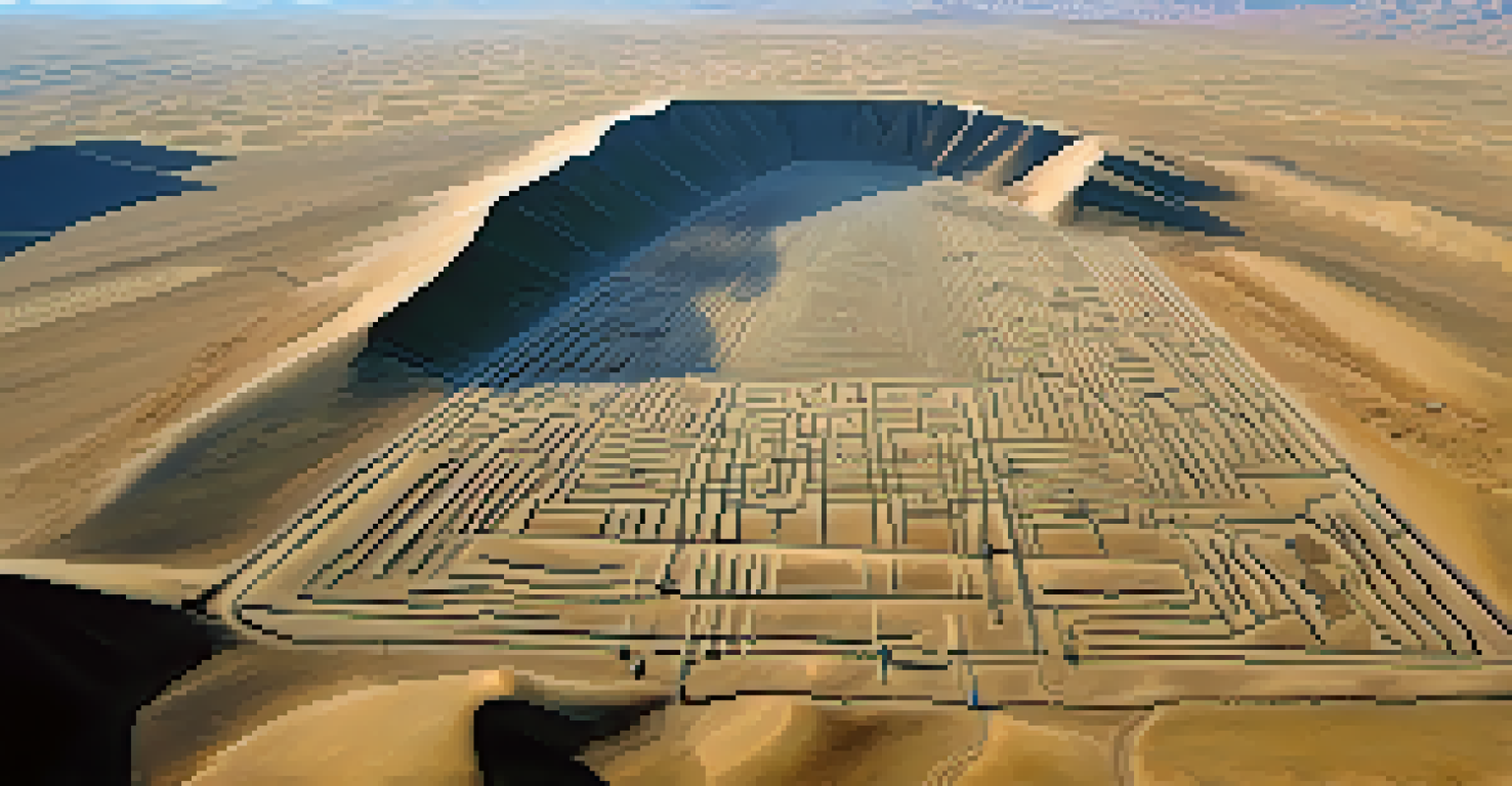UNESCO World Heritage Sites: Protecting Peru's Legacy

Understanding UNESCO World Heritage Sites
UNESCO World Heritage Sites are places recognized for their cultural, historical, or scientific significance. They are deemed to have outstanding universal value, making them worthy of protection for future generations. The designation not only highlights the importance of these sites but also fosters a sense of pride among local communities.
Preservation of one's own culture does not require contempt or disrespect for other cultures.
For instance, Machu Picchu, one of Peru's most famous sites, was designated in 1983 due to its remarkable Incan architecture and breathtaking landscape. This recognition helps to promote awareness about the need for conservation and responsible tourism. When people understand the value of these sites, they are more likely to appreciate and protect them.
In Peru, there are 12 UNESCO World Heritage Sites, each telling a unique story about the nation's diverse history and culture. These sites range from ancient ruins to colonial towns, showcasing the rich tapestry of Peru's past and its ongoing legacy.
The Importance of Protecting Peru's Heritage
Protecting Peru's UNESCO World Heritage Sites is crucial for preserving the country's cultural identity. These sites are not just historical markers; they are living representations of Peru's traditions, beliefs, and artistic expressions. By safeguarding them, we ensure that future generations can connect with their heritage.

Moreover, these sites contribute significantly to Peru's economy, especially through tourism. Tourists flock to Machu Picchu and the Sacred Valley, eager to experience the beauty and history firsthand. However, without proper protection and management, the influx of visitors could lead to degradation and loss of these irreplaceable treasures.
Significance of UNESCO Sites
UNESCO World Heritage Sites in Peru are vital for preserving cultural identity and promoting responsible tourism.
In addition to economic benefits, protecting these sites fosters a deeper understanding of cultural diversity. Engaging with Peru's heritage allows people to appreciate the richness of different cultures, encouraging respect and collaboration among communities both locally and globally.
Challenges Faced by Heritage Sites in Peru
Despite their importance, UNESCO World Heritage Sites in Peru face numerous challenges. Issues such as climate change, urban development, and increased tourism can threaten their integrity and preservation. For example, the rising temperatures and extreme weather events can cause erosion and damage to ancient structures.
The past is not dead. It is not even past.
Another challenge is the balance between tourism and conservation. While tourism brings in revenue, it can also lead to overcrowding and environmental degradation. Sites like Machu Picchu have implemented regulations to manage visitor numbers, but ongoing efforts are needed to ensure they remain sustainable.
Additionally, illegal activities such as looting and encroachment on archaeological sites pose significant threats. Strengthening laws and community involvement in protecting these sites is essential to combat these challenges and preserve Peru's heritage for future generations.
Community Involvement in Heritage Protection
Local communities play a vital role in the protection of UNESCO World Heritage Sites. Engaging them in conservation efforts helps build a sense of ownership and responsibility toward their cultural heritage. When communities are involved, they are more likely to advocate for the preservation of their sites.
Education is key in this process. By providing training and resources, communities can learn how to manage tourism sustainably and protect their heritage. Programs that promote traditional crafts and practices can help sustain cultural identity while also creating economic opportunities.
Challenges in Site Preservation
Peru's heritage sites face threats from climate change, tourism, and illegal activities, requiring proactive conservation efforts.
For example, in the Sacred Valley, local artisans can showcase their crafts to visitors, creating a mutually beneficial relationship. This not only supports the local economy but also helps visitors gain a deeper understanding of the region's culture and the importance of preserving it.
UNESCO's Role in Heritage Conservation
UNESCO plays a pivotal role in the conservation of heritage sites worldwide, including those in Peru. By providing guidelines and support, UNESCO helps nations develop effective management plans to protect their sites. This collaboration fosters a global network of knowledge and resources dedicated to conservation efforts.
Additionally, UNESCO raises awareness about the importance of cultural heritage through campaigns and educational initiatives. By promoting the benefits of heritage conservation, they encourage both governments and communities to take action. This advocacy is crucial in ensuring that sites receive the attention and funding they need.
UNESCO also assists in monitoring the condition of World Heritage Sites, ensuring that their status is maintained. Through regular evaluations, they identify areas that require immediate attention, helping to address issues before they become critical.
Case Study: Machu Picchu's Conservation Efforts
Machu Picchu stands as a prime example of successful conservation efforts in Peru. Since its designation as a UNESCO World Heritage Site, extensive measures have been implemented to protect its unique environment and cultural significance. These efforts include controlled visitor access and ongoing restoration projects.
In recent years, a comprehensive management plan has been developed to address the challenges posed by tourism and environmental changes. This plan focuses on sustainable practices, such as limiting the number of visitors and promoting eco-friendly transportation options. Such strategies help to preserve the site's integrity while allowing visitors to experience its beauty.
Community's Role in Conservation
Local communities are essential in protecting heritage sites, as their involvement fosters ownership and sustainable practices.
Moreover, local communities are actively involved in these conservation efforts. By participating in preservation projects, they not only contribute to the site's upkeep but also gain valuable skills and knowledge, fostering a deeper connection to their heritage.
Future Prospects for Peru's Heritage Sites
The future of Peru's UNESCO World Heritage Sites hinges on continued commitment to their protection and sustainable management. As global awareness of cultural heritage grows, there is an increasing push for funding and resources to support conservation efforts. This presents a unique opportunity for Peru to enhance its heritage tourism and education.
Innovative approaches, such as integrating technology into conservation practices, are also on the rise. Virtual reality tours and digital archiving can help preserve these sites while making them accessible to a wider audience. These advancements can foster appreciation and respect for Peru's rich cultural legacy.

Ultimately, the preservation of Peru's heritage sites is a shared responsibility. By fostering collaboration among governments, local communities, and international organizations, we can ensure that these treasures endure for generations to come, enriching our understanding of history and culture.